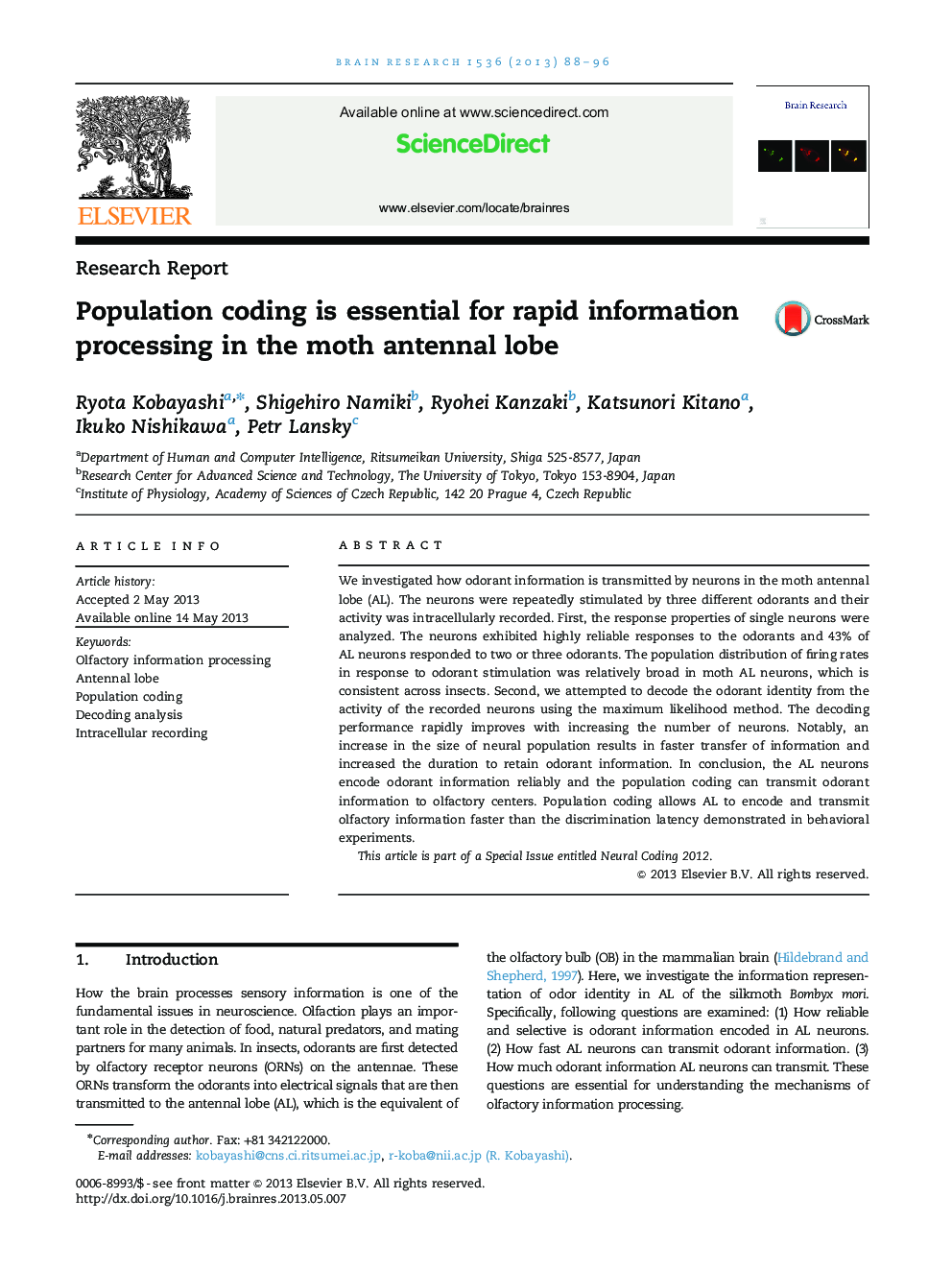| Article ID | Journal | Published Year | Pages | File Type |
|---|---|---|---|---|
| 6263658 | Brain Research | 2013 | 9 Pages |
We investigated how odorant information is transmitted by neurons in the moth antennal lobe (AL). The neurons were repeatedly stimulated by three different odorants and their activity was intracellularly recorded. First, the response properties of single neurons were analyzed. The neurons exhibited highly reliable responses to the odorants and 43% of AL neurons responded to two or three odorants. The population distribution of firing rates in response to odorant stimulation was relatively broad in moth AL neurons, which is consistent across insects. Second, we attempted to decode the odorant identity from the activity of the recorded neurons using the maximum likelihood method. The decoding performance rapidly improves with increasing the number of neurons. Notably, an increase in the size of neural population results in faster transfer of information and increased the duration to retain odorant information. In conclusion, the AL neurons encode odorant information reliably and the population coding can transmit odorant information to olfactory centers. Population coding allows AL to encode and transmit olfactory information faster than the discrimination latency demonstrated in behavioral experiments.This article is part of a Special Issue entitled Neural Coding 2012.
